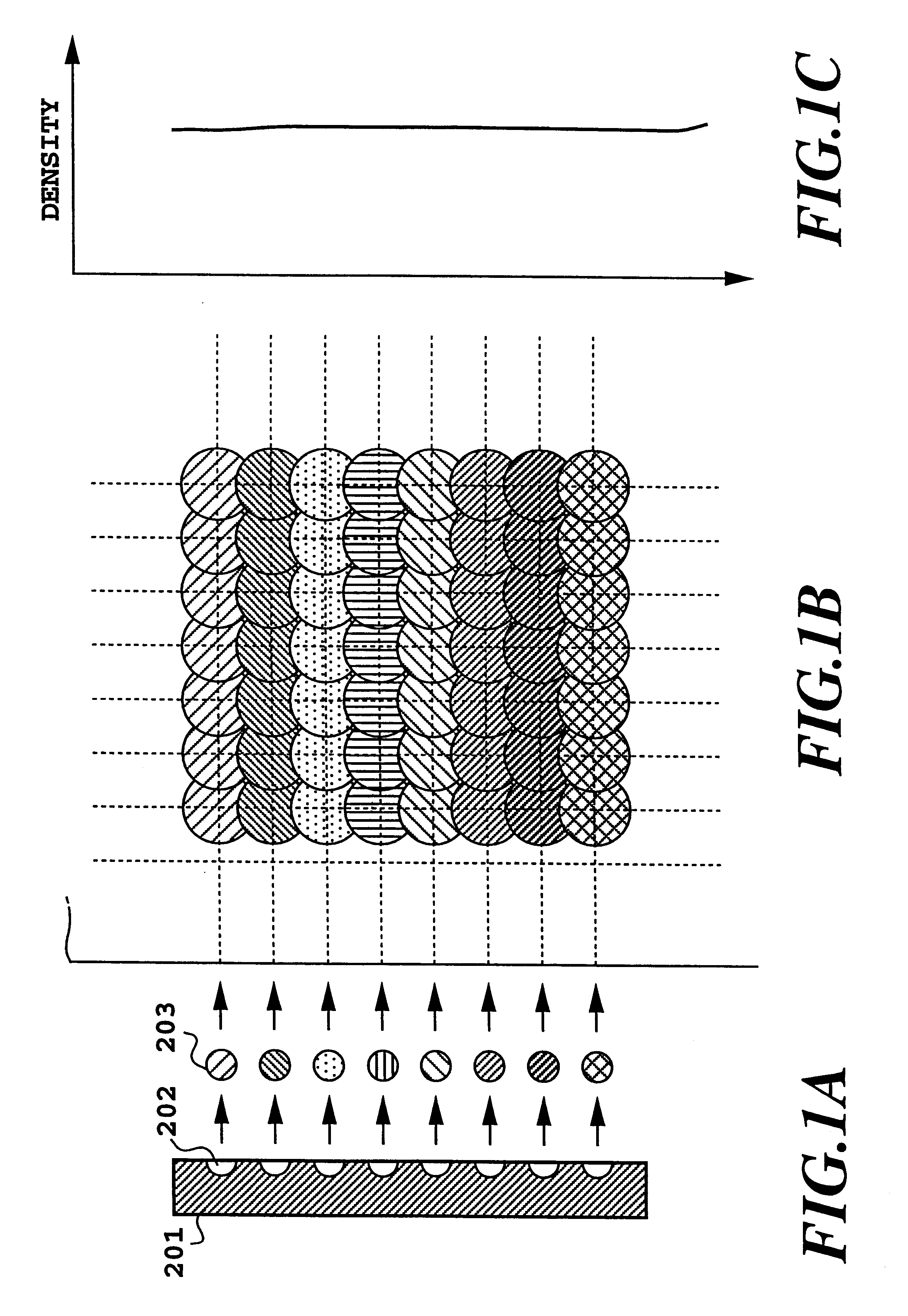Adjustment method of dot printing positions and a printing apparatus
a technology of printing apparatus and adjustment method, which is applied in the direction of printing apparatus, spacing mechanism, electrical apparatus, etc., can solve the problems of reducing image quality, difficult to realize, and increasing the cost of printing apparatus, and achieves excellent operational performance, low cost, and low cost
- Summary
- Abstract
- Description
- Claims
- Application Information
AI Technical Summary
Benefits of technology
Problems solved by technology
Method used
Image
Examples
second embodiment
FIG. 24 is a flowchart illustrating printing registration processing in the This processing can be applied as a part of processing in general algorithm described later.
As shown in FIG. 24, at step S121, the nine patterns 61-69 shown in FIG. 17 are printed as the printing patterns. The reflection optical density of the printing pattern is measured in the same manner as in the bi-directional printing.
Next, at step S122, a decision is made as to whether or not the highest one among the measured reflection optical densities falls within a range of 0.7 to 1.0 of an OD value. If the value falls within the predetermined range, the operation proceeds to a next step S123.
If the result at step S122 is that the reflection optical density does not fall within the range of 0.7 to 1.0, the operation proceeds to step S125. At step S125, the printing pattern is modified to patterns shown in FIGS. 23A to 23C where the dots of the printing pattern are thinned to two thirds when the value is greater ...
first embodiment
In FIGS. 25A to 25C, white dots 72 represent dots printed by the first printing head, and hatched dots 74 represent dots printed by the second printing head. FIG. 25A illustrates dots in the case where the printing positions are well registered; FIG. 25B, where the printing positions are registered with a slight offset; and FIG. 25C, where the printing positions are registered with a greater offset. As is obvious from comparison of FIGS. 25A and 25B, when the dot diameter is large, the area factor is maintained at substantially 100% even if the printing positions of the white dots and the hatched dots are slightly offset, and thus, the reflection optical density is hardly varied. Namely, the condition where the reflection optical density is sensitively decreased according to variation of the offset amount of the printing position, as described in the first embodiment, is not satisfied.
On the other hand, FIGS. 26A to 26C show the case where the interval between the dots in the carria...
PUM
 Login to View More
Login to View More Abstract
Description
Claims
Application Information
 Login to View More
Login to View More - R&D
- Intellectual Property
- Life Sciences
- Materials
- Tech Scout
- Unparalleled Data Quality
- Higher Quality Content
- 60% Fewer Hallucinations
Browse by: Latest US Patents, China's latest patents, Technical Efficacy Thesaurus, Application Domain, Technology Topic, Popular Technical Reports.
© 2025 PatSnap. All rights reserved.Legal|Privacy policy|Modern Slavery Act Transparency Statement|Sitemap|About US| Contact US: help@patsnap.com



